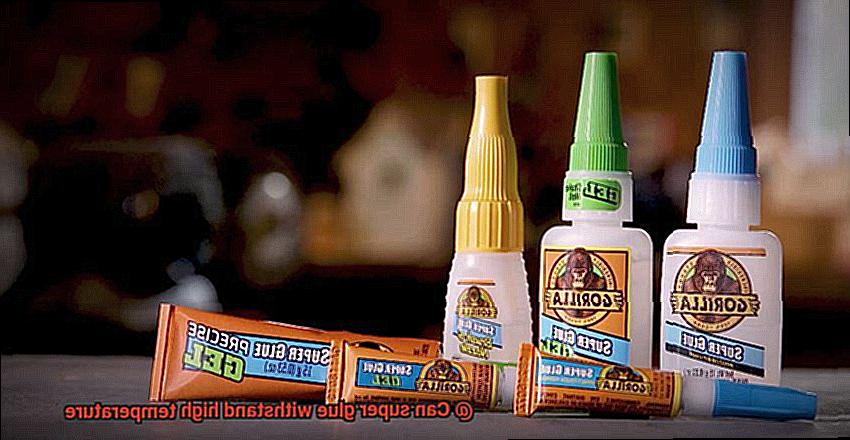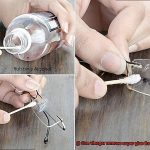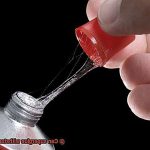Ever been stuck in a jam, desperately needing to fix something ASAP, but unsure if your trusty super glue can handle the heat? Well, fret no more. In this blog post, we’re diving deep into the world of super glue to uncover its ability to withstand high temperatures.
Super glue, that go-to for quick fixes and crafty endeavors, is known for its bonding prowess. But when faced with scorching conditions, does it crumble or stay strong?
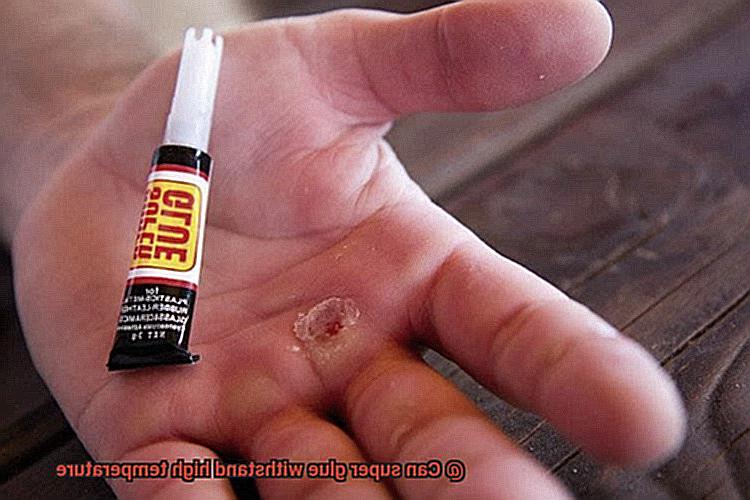
To truly grasp the science behind it all, let’s first understand how super glue works. It’s all about a chemical reaction called polymerization. When this adhesive meets moisture, it hardens lightning fast and creates an unbreakable bond that sticks almost anything together. But can it handle the heat? Let’s find out.
Throughout this post, we’ll explore how super glue fares in different scenarios. We’ll test its mettle under intense sunlight, extreme industrial temperatures, and even the heat generated by heavy-duty machinery. Get ready for some surprising discoveries about whether super glue is a hero in hot situations or if it tends to lose its grip.
So if you’ve ever wondered if super glue can handle the heat, join us on this captivating journey as we uncover the truth about its resilience against high temperatures.
Whether you’re a DIY enthusiast or just curious about bonding agents’ wonders, this blog post guarantees valuable insights and answers to your burning questions. Get ready to embrace the adhesive madness and learn if super glue’s strength holds up when things get hot.
What is Super Glue?
Contents
- 1 What is Super Glue?
- 2 Temperature Resistance of Super Glue
- 3 Recommended Operating Temperature Range
- 4 Thermal Degradation of Super Glue
- 5 Impact of Material Bonded on Heat Resistance
- 6 Use of Heat-Resistant Adhesives for High-Temperature Applications
- 7 Use of Heat-Resistant Tapes for Temporary Bonding
- 8 Choosing the Right Adhesive for Your Application
- 9 Conclusion
When it comes to quick fixes and DIY projects, having a reliable adhesive on hand is essential. One adhesive that has gained immense popularity for its fast-drying and strong bonding properties is super glue, also known as cyanoacrylate adhesive. In this article, we will explore the fascinating world of super glue, including its origins, characteristics, and temperature resistance.
The Birth of Super Glue:
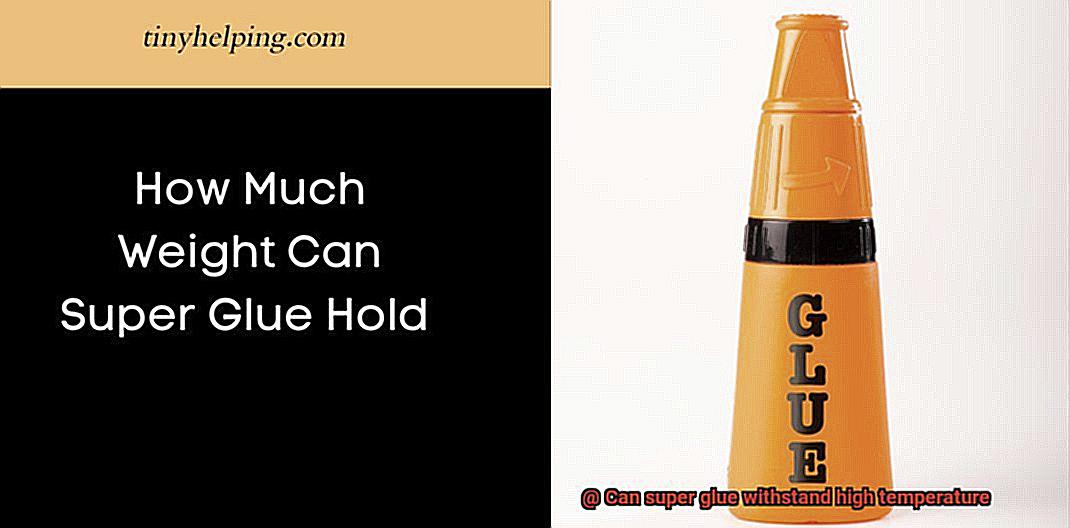
Super glue’s journey began in the 1940s when Dr. Harry Coover, a chemist at Eastman Kodak, accidentally discovered it while searching for a clear plastic coating. Driven by its incredible sticking power, he developed it further for commercial use.
How Does Super Glue Work?
At the heart of super glue is the chemical compound cyanoacrylate. When exposed to moisture, it undergoes rapid polymerization, forming a network of long molecular chains. This reaction creates an incredibly strong bond that can adhere to various surfaces like metal, plastic, wood, ceramics, and even skin.
Rapid Bonding:
One standout feature of super glue is its ability to bond quickly. Within seconds of application, the adhesive starts to cure and reaches its full strength within minutes. This makes it perfect for repairing broken items or assembling small parts when time is of the essence.
Temperature Resistance:
Super glue is known for its strength but has limitations when it comes to withstanding high temperatures. Different brands and formulations have varying temperature ranges for optimal performance. Generally, super glue can handle temperatures as low as -40°C (-40°F) and as high as 120°C (248°F). However, prolonged exposure to extreme heat can cause degradation and weakening of the adhesive.
Considerations for High-Temperature Environments:
For applications involving sustained exposure to high temperatures, selecting a specialized heat-resistant adhesive or exploring alternative options is crucial. These adhesives are specifically formulated to withstand extreme heat and provide a stronger bond. Additionally, it’s important to consider the materials being bonded, as some materials handle higher temperatures better than others.
Temperature Resistance of Super Glue
Super glue, also known as cyanoacrylate adhesive, has gained fame for its quick bonding and formidable strength. However, when it comes to temperature resistance, this mighty adhesive does have its boundaries. In this article, we will delve into the factors that influence the temperature resistance of super glue and explore how you can ensure peak performance when working with this adhesive.
Understanding the Temperature Range:
Super glue can maintain its bond in temperatures ranging from a bone-chilling -40°F (-40°C) to a sweltering 120°F (48°C). This range covers most day-to-day applications, but venturing beyond these extremes can compromise the bond strength and even cause the adhesive to crumble.
Factors Affecting Performance:
- Brand and Formulation: Different brands and formulations of super glue exhibit varying temperature resistance capabilities. It is crucial to consult the manufacturer’s guidelines for specific temperature limits tailored to your adhesive.
- Duration of Exposure: Prolonged exposure to high temperatures can hasten the degradation process of super glue, resulting in an accelerated breakdown of the adhesive’s integrity. Avoid using super glue in environments where it will endure continuous scorching heat.
- Extreme Heat and Flames: Super glue is not engineered to withstand direct exposure to scorching heat or flames. If your project demands adhesive that can endure such conditions, consider exploring specialized heat-resistant alternatives.
Optimizing Performance:
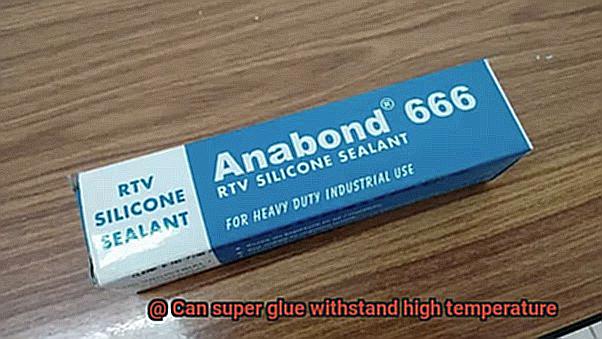
- Choose the Right Glue: If your project involves high temperatures, it is prudent to invest in specialized heat-resistant adhesives available in the market. These adhesives are meticulously engineered to maintain bond strength even at elevated temperatures, providing a trustworthy solution for projects that demand thermal durability.
- Clean and Prepare Surfaces: Ensure that the surfaces you intend to bond are pristine, dry, and devoid of any contaminants or oils. This meticulous preparation optimizes adhesion and enhances the overall performance of the super glue.
- Apply Adequate Amount: Apply a thin, precise layer of super glue to one of the surfaces being bonded. Using an excessive amount of adhesive can lead to a weaker bond and potentially compromise its temperature resistance.
Recommended Operating Temperature Range
Super glue is a remarkable adhesive that can bond things together in an instant, but it does have its limitations when it comes to temperature resistance.
So, what exactly is the recommended operating temperature range for super glue? Generally, most super glues are not designed to handle high temperatures. It’s best to stick to a range of -40°F (-40°C) to 200°F (93°C). Venture beyond these temperatures, and you might find the adhesive properties of the glue deteriorating, resulting in weaker bonds or even complete failure. Yikes.
But remember, this temperature range may vary slightly depending on the brand and type of super glue you’re using. There are some specialized types of super glue out there that can withstand higher temperatures, but they’re not commonly found in everyday use.
It’s crucial to be aware of the risks and limitations when using super glue in high-temperature environments. Going above the recommended range can lead to a loss of bond strength or even the release of toxic fumes. And nobody wants that.
To ensure your super glue bond remains strong and secure, always follow the manufacturer’s guidelines regarding temperature limitations. If you anticipate working with high temperatures, it might be worth exploring alternative adhesive options specifically designed for those conditions.
Thermal Degradation of Super Glue
This incredible adhesive, with its renowned bonding power, has one Achilles’ heel – high temperatures. In this article, we will delve into the factors that influence the thermal degradation of super glue and provide you with valuable insights on how to avoid finding yourself in a sticky situation.
Composition and Heat Threshold:
The composition of super glue plays a crucial role in its resistance to heat. Different formulations have different heat thresholds, making it essential to select the right glue for your intended application. After all, you wouldn’t want your carefully crafted bond to crumble under the scorching sun, would you?
Temperature Range:
Most commercial super glues start to break down at temperatures above 150 degrees Celsius (that’s a hot 302 degrees Fahrenheit.). However, here’s the catch – prolonged exposure to high temperatures can expedite the degradation process. If your project involves enduring extreme heat for an extended period, it is advisable to consider alternative adhesives specifically designed for such fiery conditions.
Moisture and UV Radiation:
Humidity and moisture can be troublemakers too, accelerating the degradation process and weakening your bond faster than you can say “super glue.” And let’s not forget about UV radiation from sunlight or artificial sources – it can wreak havoc on your adhesive masterpiece if it lacks UV resistance.
Testing and Decision-Making:
Manufacturers employ controlled tests to determine a super glue’s ability to withstand high temperatures. These tests subject the adhesive to various temperatures and durations, providing valuable insights into its thermal stability. Armed with this knowledge, you can make informed decisions when selecting a super glue for your projects.
Impact of Material Bonded on Heat Resistance
In the world of bonding materials together, heat resistance is a critical factor to consider. We’ve all experienced the disappointment of a super glue bond failing under high temperatures. But fear not. Today, we embark on a fascinating journey into the realm of glue, exploring how material bonding impacts heat resistance. From the type of material to surface area, thickness, and formulation of the adhesive, we uncover the secrets behind creating bonds that can withstand the heat.
The Heat Resistance Conundrum:
When it comes to heat resistance, not all materials are created equal. Metals and glass possess an inherent ability to withstand high temperatures, making them ideal candidates for super glue bonding. These resilient materials brave the heat without compromising bond integrity. However, plastics and certain types of wood are more vulnerable to damage when exposed to elevated temperatures. In these cases, super glue may falter, resulting in weakened or failed bonds.
Size Matters:
The surface area and thickness of a bond also play a pivotal role in heat resistance. A larger surface area or thicker bond has a better capacity to dissipate heat effectively, reducing the risk of damage. Conversely, a smaller surface area or thinner bond concentrates heat, leaving it susceptible to failure. Size does matter when it comes to creating bonds that can withstand the heat.
Formulation for Success:
Not all super glues are created equal. Different brands and formulations offer varying levels of heat resistance. Some specialized super glues are specifically designed for high-temperature applications, enabling them to endure extreme heat without compromising bond strength. These superhero adhesives boast unique properties that make them ideal for demanding environments.
Limits of Heat Resistance:
Even with advanced formulations, there are limits to how much heat super glue can withstand. In industries like aerospace or heavy manufacturing, where extreme temperatures are common, alternative bonding methods or materials that can endure higher heat may be required. It’s essential to understand the limitations of heat resistance and choose the right adhesive for the job.
Use of Heat-Resistant Adhesives for High-Temperature Applications
Today, we embark on a journey to uncover the secrets of heat-resistant adhesives and their invaluable role in high-temperature applications. From aerospace marvels to automotive wonders, these super glues are the unsung heroes that hold things together when the heat is on.
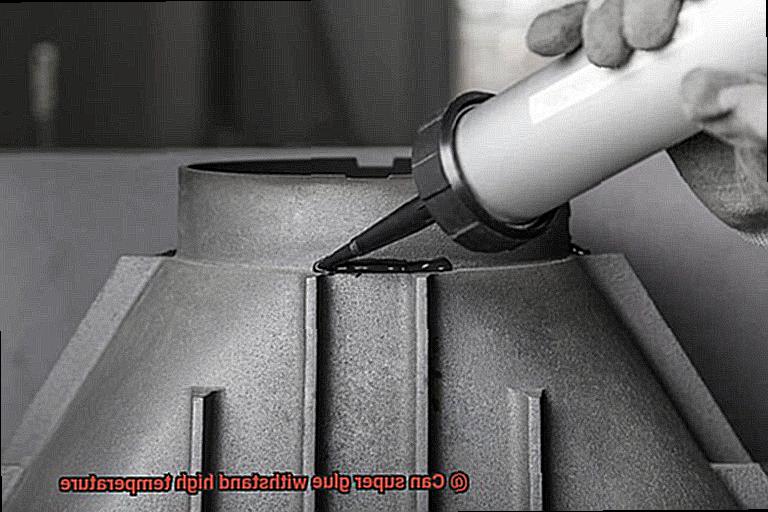
Defying the Heat:
While traditional adhesives crumble under intense heat, heat-resistant adhesives defy the odds. Formulated with special ingredients, they retain their strength and integrity even in extreme temperatures.
These extraordinary adhesives maintain their adhesive properties at elevated temperatures, ensuring a reliable bond that never falters.
Types of Heat-Resistant Adhesives:
Let’s explore some popular types of heat-resistant adhesives and their unique properties:
- Silicone-based adhesives: Known for exceptional heat resistance and flexibility, they can endure temperatures ranging from -60°C to 300°C (-76°F to 572°F). Versatile in nature, they find applications in various industries.
- Epoxy adhesives: With unmatched thermal stability, epoxy adhesives withstand temperatures up to 150°C (302°F) or higher. They are often utilized for bonding metal parts or sealing electronic components.
- Polyurethane-based adhesives: Offering heat resistance up to 120°C (248°F), polyurethane adhesives provide remarkable bond strength even in hot environments. They are commonly employed in automotive applications.
Factors to Consider:
When selecting a heat-resistant adhesive, several factors come into play, including substrate compatibility, curing time, and bond strength:
- Ensure proper surface preparation or primers as recommended by the adhesive manufacturer.
- Adhere to recommended application and curing temperature guidelines for optimal results.
Heat-resistant adhesives are the superheroes of the glue world, defying scorching temperatures and providing unwavering bonds in high-temperature applications. Whether it’s silicone-based adhesives, epoxy adhesives, or polyurethane-based adhesives, each type possesses unique properties and applications. So, the next time you encounter a challenging high-temperature bonding task, remember to choose the right heat-resistant adhesive and let it work its magic.
Use of Heat-Resistant Tapes for Temporary Bonding
In the realm of high-temperature bonding, super glue may fall short of expectations. Enter heat-resistant tapes, the unsung heroes of temporary bonding. These remarkable tapes are specifically engineered to withstand extreme heat while maintaining their adhesive properties. In this article, we will delve into the numerous benefits of using heat-resistant tapes for temporary bonding in high-temperature environments, highlighting their invaluable role in various industries.
Advantage 1: Unyielding Adhesive Strength
Unlike super glue, which weakens or loses its bond under heat, heat-resistant tapes offer unwavering and long-lasting adhesion even in the face of extreme temperature conditions. They are perfectly suited for applications where materials need to be temporarily bonded prior to undergoing processes such as welding or soldering.
Advantage 2: Exceptional Thermal Stability
Heat-resistant tapes are typically crafted from silicone or polyimide, materials renowned for their exceptional thermal stability. These tapes can endure temperatures ranging from several hundred to over a thousand degrees Fahrenheit. With a high melting point and low thermal conductivity, they resist heat transfer and maintain their adhesive properties even when exposed to intense heat sources.
Advantage 3: Flexibility and Conformability
Heat-resistant tapes possess a remarkable flexibility and conformability that allows them to adhere to irregular surfaces or wrap around complex shapes. This inherent flexibility ensures a secure bond even on challenging substrates, making them incredibly versatile across various industries.
Advantage 4: Excellent Chemical Resistance
In addition to their heat resistance, these tapes exhibit excellent chemical resistance. This makes them suitable for use in environments where they may come into contact with solvents, oils, or other harsh chemicals. They can withstand chemical exposure without compromising their adhesive strength.
Advantage 5: User-Friendly Application
The application of heat-resistant tapes for temporary bonding is simple and user-friendly. These tapes are supplied in rolls or sheets with a protective backing that can be easily removed. The adhesive side is then applied to the surfaces that need to be bonded together. The tape provides an immediate and robust bond that can withstand the required temperatures until the bonding process is complete.
Advantage 6: Masking Capabilities
Heat-resistant tapes can also serve as exceptional masking materials during high-temperature processes. For instance, in the automotive industry, these tapes are commonly used to mask off areas that should not be exposed to paint or coatings during the painting process. Their heat resistance ensures they remain intact and leave no residue or damage when removed.
Choosing the Right Adhesive for Your Application
Selecting the right adhesive for high-temperature applications is paramount. Whether you’re a DIY enthusiast or a professional, understanding the different adhesives available can save you time, money, and headaches. In this comprehensive guide, we’ll explore three popular choices: super glue, epoxy adhesives, and heat-resistant tape. Let’s delve into each option to help you make an informed decision for your specific needs.
Super Glue for High-Temperature Applications:
Super glue, also known as cyanoacrylate adhesive, is renowned for its rapid bonding and strong adhesive properties. However, not all super glues can withstand high temperatures. For applications requiring elevated temperature resistance, look for products labeled as “high-temperature” or “heat-resistant.” These specialized super glues are formulated with ingredients that allow them to maintain their strength and bonding properties even when exposed to heat.
Considerations for Super Glue:
When selecting a super glue for high-temperature use, keep the following factors in mind:
- Temperature Range: Different adhesives have varying temperature limits. Choose a super glue that can withstand the specific temperature conditions of your application.
- Bonding Strength: Consider the strength of the bond required for your project. Some super glues offer higher bond strengths than others.
- Material Compatibility: Ensure that the super glue is suitable for the materials you’re working with. Certain adhesives may not adhere well to certain surfaces.
Alternatives to Super Glue:

While super glue can be suitable for moderate temperature ranges, there are alternative options for higher-temperature applications:
- Epoxy Adhesives: Known for their exceptional temperature resistance, epoxy adhesives can withstand temperatures ranging from 250°F to 600°F or even higher depending on the specific product. They provide excellent bonding strength and durability, making them ideal for applications requiring prolonged exposure to high heat.
- Heat-Resistant Tape: Heat-resistant tapes, made from silicone or polyimide, are an excellent alternative to super glue for high-temperature applications. These tapes can withstand scorching temperatures while maintaining their adhesive strength. They offer exceptional thermal stability, flexibility, conformability to irregular surfaces, and resistance to chemicals.
Benefits of Heat-Resistant Tape:
Here are some advantages of using heat-resistant tape:
- Exceptional Thermal Stability: With melting points ranging from several hundred to over a thousand degrees Fahrenheit, heat-resistant tapes can handle extreme heat sources.
- Flexibility and Conformability: These tapes adhere to irregular surfaces or wrap around complex shapes with ease, providing a secure bond.
- Chemical Resistance: Heat-resistant tapes withstand exposure to solvents, oils, and other harsh chemicals without compromising adhesive strength.
- Easy Application and Removal: Simply peel off the protective backing and stick the tape onto the surfaces you want to bond together. When it’s time to remove the tape, it leaves no residue or damage behind.
mLayFRQ7jdo” >
Conclusion
In conclusion, it is evident that super glue is not designed to withstand high temperatures.
When exposed to extreme heat, the adhesive properties of super glue can deteriorate, causing it to weaken or even melt. This can lead to a failure in bonding and potentially dangerous situations.
To ensure a secure and long-lasting bond, alternative adhesives specifically formulated for high-temperature environments should be used.

